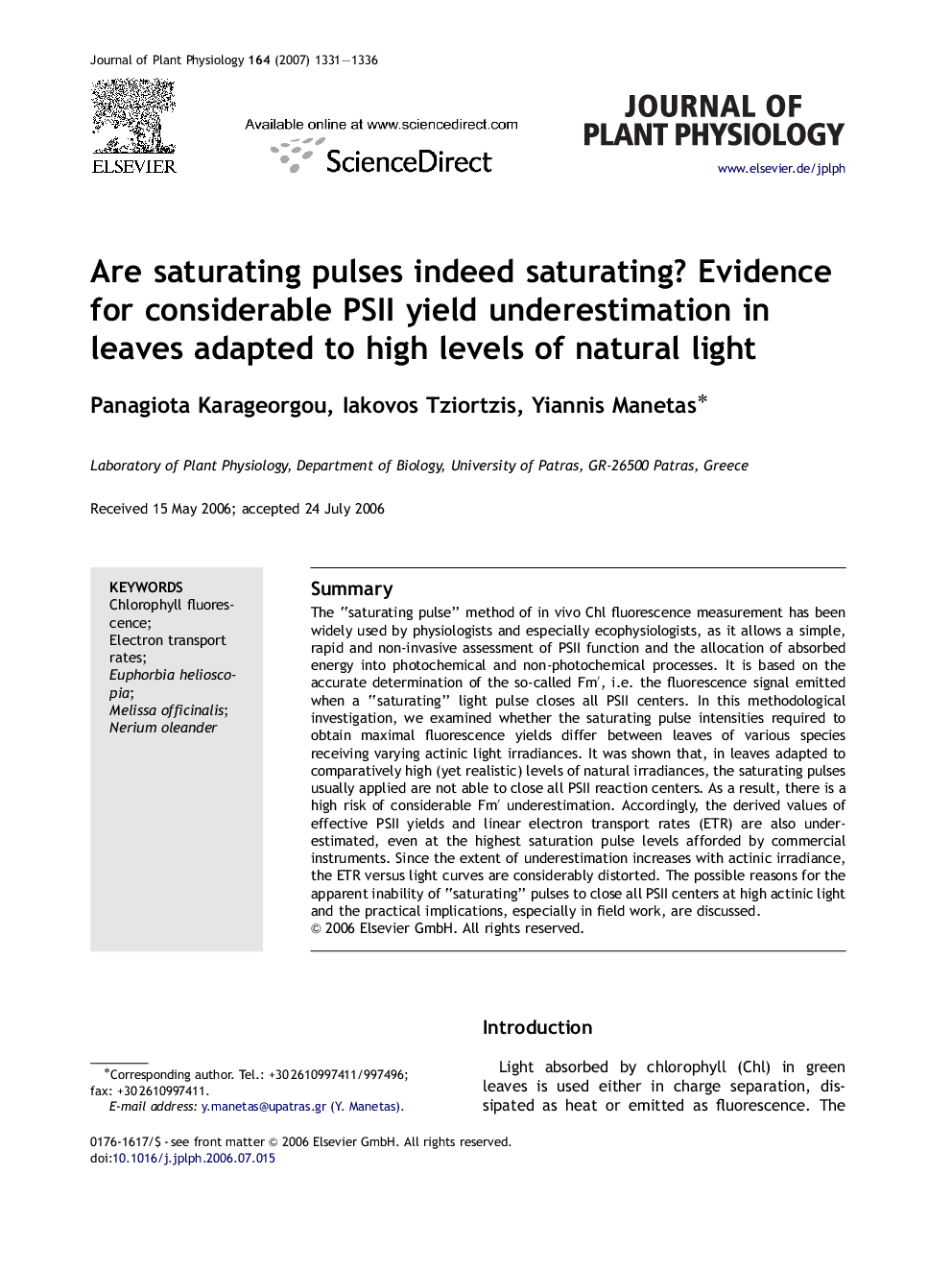| Article ID | Journal | Published Year | Pages | File Type |
|---|---|---|---|---|
| 2058026 | Journal of Plant Physiology | 2007 | 6 Pages |
SummaryThe “saturating pulse” method of in vivo Chl fluorescence measurement has been widely used by physiologists and especially ecophysiologists, as it allows a simple, rapid and non-invasive assessment of PSII function and the allocation of absorbed energy into photochemical and non-photochemical processes. It is based on the accurate determination of the so-called Fm′Fm′, i.e. the fluorescence signal emitted when a “saturating” light pulse closes all PSII centers. In this methodological investigation, we examined whether the saturating pulse intensities required to obtain maximal fluorescence yields differ between leaves of various species receiving varying actinic light irradiances. It was shown that, in leaves adapted to comparatively high (yet realistic) levels of natural irradiances, the saturating pulses usually applied are not able to close all PSII reaction centers. As a result, there is a high risk of considerable Fm′Fm′ underestimation. Accordingly, the derived values of effective PSII yields and linear electron transport rates (ETR) are also underestimated, even at the highest saturation pulse levels afforded by commercial instruments. Since the extent of underestimation increases with actinic irradiance, the ETR versus light curves are considerably distorted. The possible reasons for the apparent inability of “saturating” pulses to close all PSII centers at high actinic light and the practical implications, especially in field work, are discussed.
